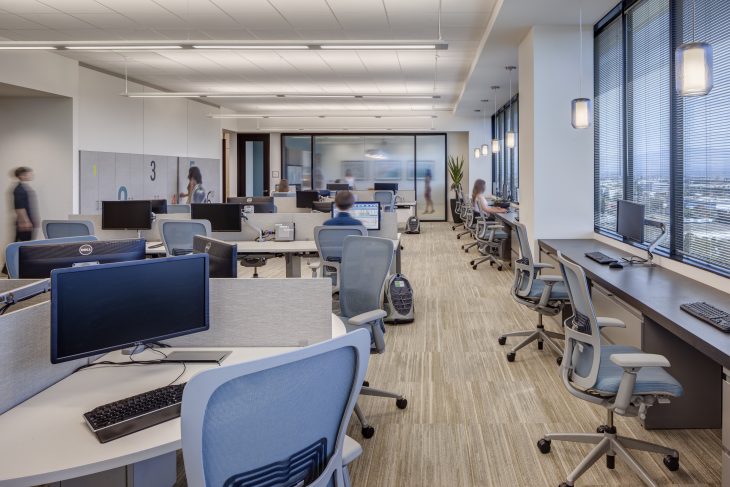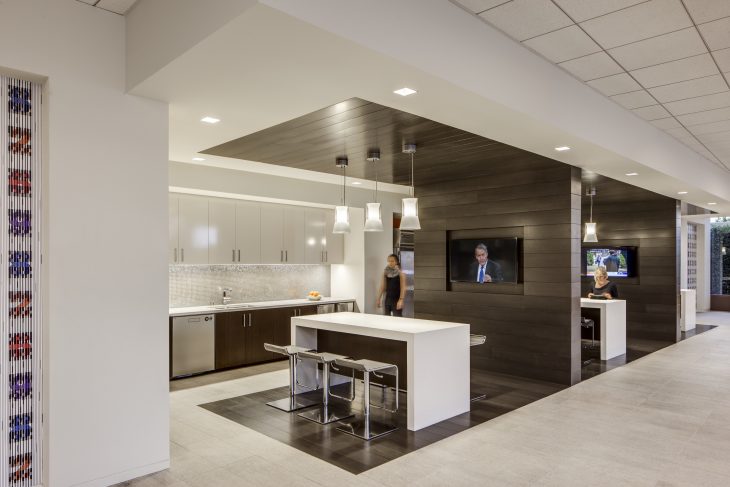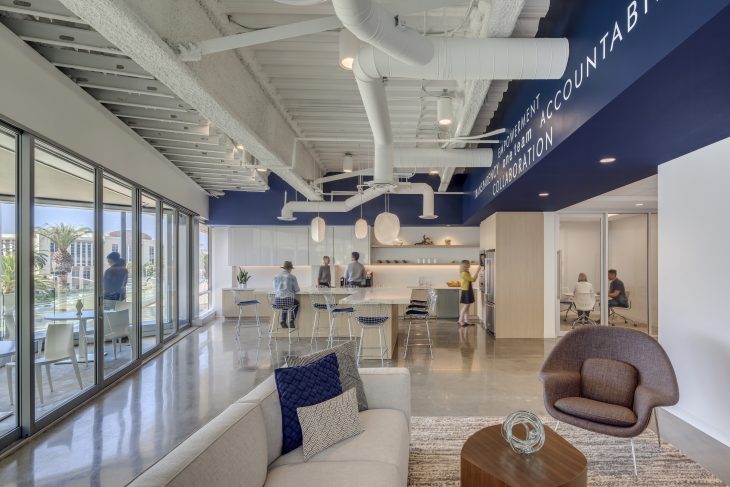Heidi Hendy and Anna Grayhek of H. Hendy Associates share trends that will continue to redefine the office of tomorrow as employers work to gain a competitive edge in 2019 and beyond.
The 2018 office market demonstrated robust growth, characterized by continued demand for space, healthy activity from occupiers, increased rents, and a wave of new supply that gave tenants increased leverage and flexibility. In addition, there continued to be a heightened demand for companies to reevaluate their space needs to ensure they will support their future workforce. Yet, despite business growth and an ongoing war for top talent, companies are becoming more reluctant to move or take on additional office space, until they are sure that their current office no longer supports their growth or function. If you are contemplating signing a commercial office lease that will extend beyond the next five to seven years, and are anticipating uncertainty in the real estate market, the question you might be asking is: “Should we stay, or should we go?”
Long term sustainability, even in a healthy economy, requires more than just a cool, hip, open office floor plan and a technologically savvy space. To truly support tomorrow’s workforce, companies will need to reimagine the concept of an office – from a space just for work – to a purpose-driven environment that fosters communication, ideation and more. And at the heart of any office transformation is the need to increase collaboration and engagement – key pillars of company cultures. Many progressive companies are reevaluating their existing space in search of effective office design solutions that can maximize their current work environment. They are recognizing that an office space that focuses on core migration patterns and increased collaboration, rather than individual work space, can become a tool that drives and retains their most valuable asset: their people.
As our workforce becomes more mobile, agile and diverse, the office of tomorrow will require a new level of workplace optimization to support business process and function. The following trends will continue to redefine the office of tomorrow as employers work to gain a competitive edge in 2019 and beyond.

Millennials Leading the Charge
Millennial leadership and technology integration will have a radical effect on the composition of the workplace. Consider this: Millennials currently make up nearly 35 percent of the workforce, according to Pew Research, and in the coming years will increasingly be assuming leadership positions. This group of digital natives and agile workers value engagement and creativity in their work environment. They crave a sense of purpose in their individual work and from the organizations to which they belong. Companies looking to reimagine their office and foster a purpose-driven work environment will need to deliver on the needs of our future leaders by maximizing spaces that support activity-based working, intuitive technology and collaboration. This includes designing thoughtfully planned spaces that integrate collaboration and amenity areas in a way that maximizes engagement yet minimizes disruption.

Reimagined Obsolete Areas
A recent study by JLL reveals that, on average, 30 percent of an organization’s office space is being underutilized. In today’s digital office environment, filing rooms, storage areas, copy centers and other static spaces have outlived their use, and are increasingly turning into boneyards for the obsolete. To optimize workspaces, organizations should work closely with an interior architect to determine how to best inject life into these dead spaces. For example, consider converting an abandoned file room into a collaboration zone or a conference room; or dividing it into focus rooms or micro offices that can double as ad-hoc meeting spaces. These types of spaces might better support the needs of your current workforce and their evolving work style preferences. When weighing the pros and cons of moving versus remodeling an existing space, consider how your rent, operational and housekeeping expenses affect the cash outflow that impact your organization’s bottom line.

Adoption of Scrum Areas
Dynamic environments that enable fast-process driven work are becoming increasingly important for many employers. Scrum, an agile framework for managing fast-process and knowledge-driven team work, enables a cross-pollination of employees to efficiently touch base on projects via 15-minute stand-up meetings. When designed effectively, scrum areas include the highest level of technology and connectivity – from laptops, multiple screens, whiteboards and intuitive software – to ensure employees can quickly access and share work. It enables immediate collaboration, and a space for teams to move in and out of freely, thereby increasing productivity and expediting employee output.

Increased Mobile Working
By 2020, nearly 75 percent of the U.S. workforce will be working remotely at some time during their week according to an IDC forecast. To accommodate this dynamic workforce, companies will need to transform their office space from a place to process work to a results-driven environment that supports its knowledge workers and their need for flexible and intuitive workspaces. By strategically moving away from traditional assigned seating, “untethering” employees from their desks, reconfiguring spaces to create fluidity, and converting areas into zones for collaboration, confidentiality, solitude or demonstration, the office of tomorrow will need to enable self-organization through a master plan that truly optimizes organizational performance.
As you decide whether to take on more space, remodel your current environment, or move entirely, keep in mind that companies gearing up for the workplace of tomorrow will need the agility to meet the needs of their current and future workforce. When office space is designed in a way that no longer effectively supports an organization’s process and function it can be a costly expense. But, by repurposing underutilized spaces, supporting an agile environment with appropriate technology, and accommodating the growing demand for telecommuting, businesses can create effective office environments that become strategic tools for their business success.


